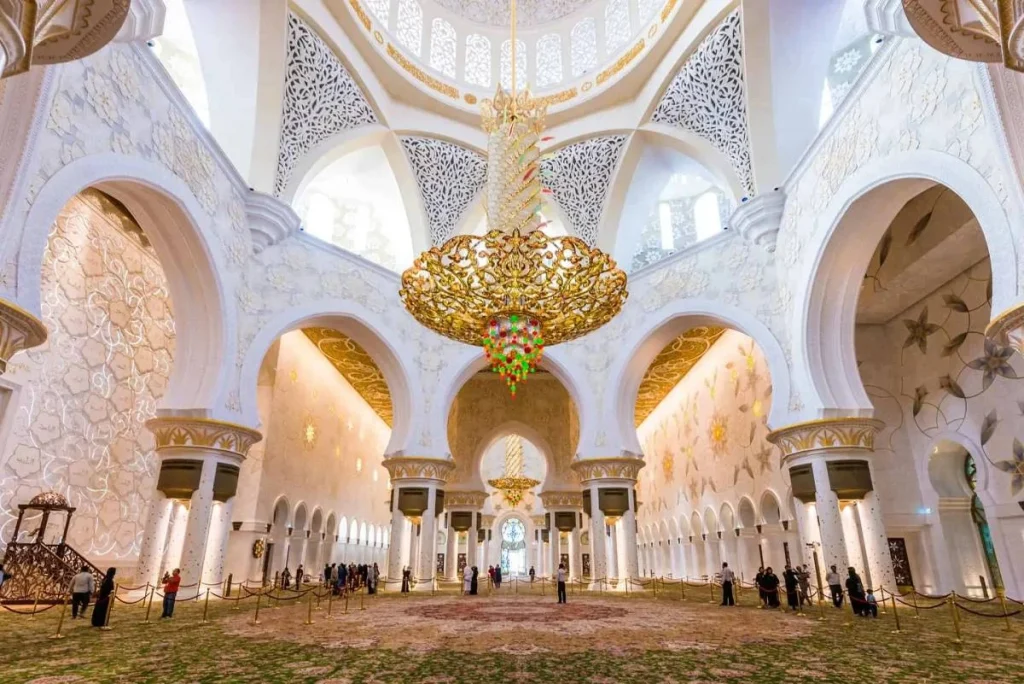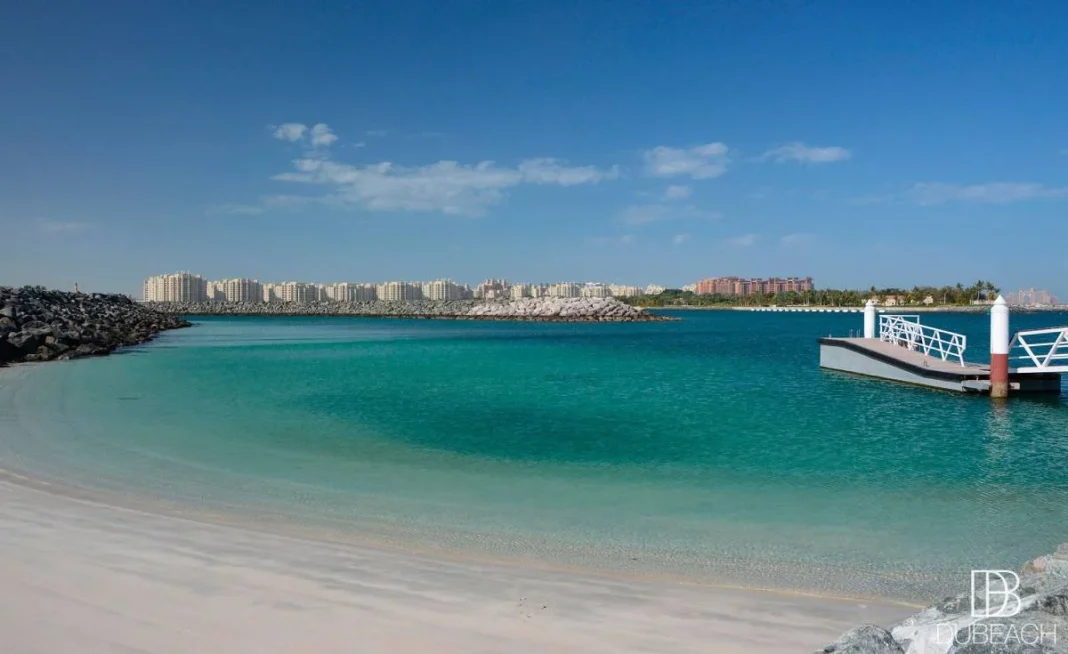The Sheikh Zayed Mosque is one of the most important attractions in Abu Dhabi and the largest building of its kind in the world. The mosque is striking due to its impressive size, ranking as the 15th largest in the world, and beyond its gardens, it spans an area of 12 hectares.
This iconic site features 82 domes, over 1,000 columns, gold chandeliers, and some treasures that are not very well known to everyone, yet they form part of the history of this amazing place. This site was built by Sheikh Zayed bin Sultan Al Nahyan, who wanted to send a message of peace that is also an icon of Islamic architecture.
The most incredible treasure of the Sheikh Zayed Mosque that is unique in the world
Within the impressive details of the Sheikh Zayed Mosque, there is a decorative object that also breaks records. It is the largest carpet in the world, located in the main prayer hall. This handcrafted treasure covers more than 5,000 square meters and weighs 47 tons. This jewel was designed by artist Ali Khaligi and was handmade by Iranian women who tied approximately 2.268 billion knots and is valued at 454 million euros.
In addition to this unique piece, the same hall also houses the most impressive lamp in the mosque. It is a chandelier that measures 10 meters wide, 15 meters high, and weighs 12 tons, with its replica in the same prayer hall weighing slightly less, around 8 tons.
The magic of the most impressive mosque in Abu Dhabi

Those who travel to Abu Dhabi make a mandatory stop at this mosque, which has unique features like the aforementioned ones. In addition to the largest carpet in the world and the chandelier of incredible dimensions, this building stands out for being the place where the lighting adjusts according to the moon. Therefore, on the domes’ nighttime installations, one can observe darker tones during a new moon and lighter tones during a full moon.
Those who want to visit Sheikh Zayed must comply with certain dress codes and schedules that are unavoidable. Among them are respecting prayer times and covering legs, head, and shoulders. If visitors do not have garments that can cover these parts, the typical robes are sold near the mosque to allow entry to this emblematic site.



